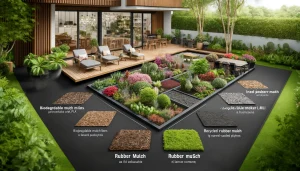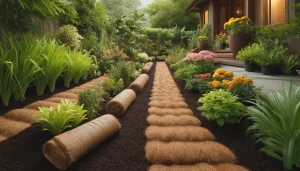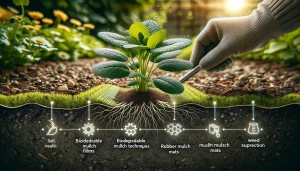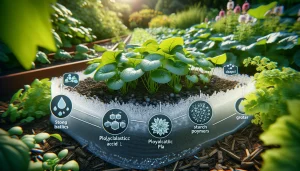Mulching has long been a cornerstone of effective landscaping and gardening, providing numerous benefits such as improved soil health, moisture retention, and weed suppression. As technology advances, so do the techniques and materials used in mulching. This blog explores the latest innovations in smart mulching technology, offering landscapers and gardeners a comprehensive understanding of how these advancements can transform their practices.

The Evolution of Mulching
Traditional mulching methods typically involve organic materials like wood chips, straw, and leaves or inorganic materials such as plastic sheeting and gravel. While these methods have been adequate to a certain extent, they often come with limitations such as decomposition rates, environmental impact, and labour intensity. Enter smart mulching technology—an innovative approach that addresses these issues while enhancing the overall benefits of mulching.

Innovations in Smart Mulching Technology
- Biodegradable Mulch Films
Biodegradable mulch films represent a significant advancement in mulching technology. Made from materials such as polylactic acid (PLA) and starch-based polymers, these films offer the benefits of traditional plastic mulches without the environmental drawbacks. They degrade naturally over time, reducing the need for removal and disposal while enriching the soil as it breaks down.
Example: One notable product in this category is Bio360, a biodegradable mulch film that conserves moisture, controls weeds, and gradually decomposes, leaving no harmful residues.
- Rubber Mulch
Recycled rubber mulch from shredded tires provides a long-lasting and sustainable alternative to organic mulches. It offers superior moisture retention and excellent weed suppression and does not decompose, making it a cost-effective solution over time. Rubber mulch also provides a soft surface, making it ideal for playgrounds and recreational areas.
Example: Rubberific Mulch is a popular brand offering recycled rubber mulch in various colours, promoting functionality and aesthetics.
- Mulch Mats
Mulch mats are prefabricated sheets made from natural fibres and synthetic materials. They are designed to provide uniform coverage, suppress weeds, and effectively retain soil moisture. They are instrumental in areas with uneven terrain or where traditional mulching materials may require more work.
Example: Ecoduty’s mulch mats are crafted from recycled paper and natural fibres, providing an eco-friendly and efficient mulching solution.

Benefits of Smart Mulching Techniques
The primary advantage of smart mulching techniques lies in their ability to enhance traditional mulching benefits while addressing common drawbacks. Here are some key benefits:
- Improved Soil Health
Smart mulching materials often include components that enrich the soil as they decompose. For instance, biodegradable films and certain mulch mats release nutrients into the soil, promoting healthier plant growth.
- Enhanced Moisture Retention
Innovative mulching materials, such as rubber mulch and biodegradable films, are designed to retain moisture more effectively than traditional organic mulches. This reduces watering requirements and improves drought resistance.
- Sustainability
Many smart mulching products are made from recycled or renewable materials, reducing the environmental impact of conventional mulches. Biodegradable options, in particular, offer an eco-friendly solution that minimizes waste and pollution.
- Labor Efficiency
Smart mulching techniques often require less maintenance and replacement compared to traditional methods. For example, rubber mulch does not need to be replenished annually, and biodegradable films eliminate the need for removal at the end of the growing season.

Implementing Smart Mulching Techniques
For landscapers and gardeners looking to adopt smart mulching techniques, the following steps can guide successful implementation:
- Assess Your Needs
Evaluate your specific landscaping or gardening requirements, considering factors such as plant types, soil conditions, and climate. This assessment will help determine the most suitable smart mulching materials.
- Select the Right Products
Choose products that align with your goals. Whether you prioritize environmental sustainability, moisture retention, or aesthetic appeal, a smart mulching solution is available to meet your needs.
- Follow Best Practices
Apply mulch materials according to manufacturer recommendations to maximize their benefits. Ensure proper coverage and thickness to achieve optimal moisture retention and weed suppression.
- Monitor and Maintain
Regularly inspect your mulched areas to ensure they continue to perform effectively. While smart mulching materials often require less maintenance, periodic checks can help address any issues promptly.

Smart mulching techniques significantly advance landscaping and gardening, enhancing soil health, moisture conservation, and sustainability. By adopting these innovative approaches, landscapers and gardeners can achieve more efficient and environmentally friendly practices, ensuring healthier and more vibrant landscapes. As technology continues to evolve, the future of mulching promises even more significant advancements, paving the way for a greener and more sustainable world.